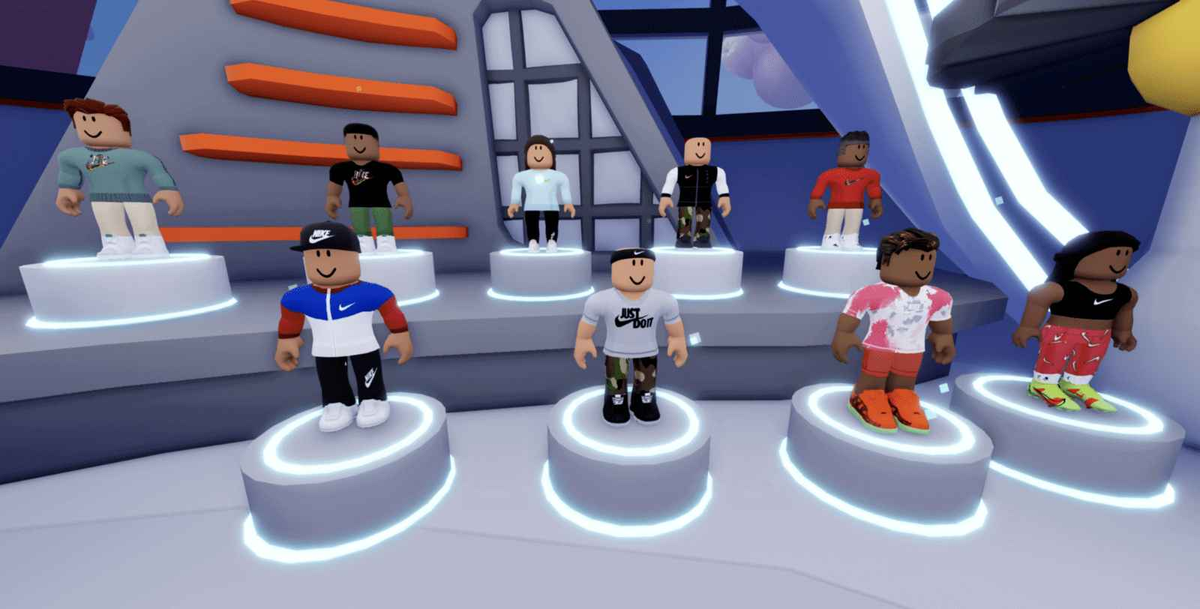Brand Experiences in the Metaverse: Don’t ‘Just Do It’
You’d have to be living in an alternate universe to not have been exposed to the hype around “brand experiences” in the metaverse (which is largely taking place on Roblox for now). But looking past the industry chatter, how are these initiatives actually playing out in, you know, the real world?
Well, the Halloween-themed Chipotle Boorito Maze was brilliant, garnered a ton of earned media, enjoyed great player traction on Roblox and no doubt helped boost 2021 sales for the annual $5 Boorito meal promotion. Meanwhile, Vans World, a more sustainable skateboarding experience that launched in early September on Roblox, looked like it had some initial staying power, but has since trailed off -- maybe it can be revitalized, maybe not.

More worryingly, when viewed against the greater context of Roblox and its top-performing games, the brand experiences from numerous other companies like Gucci and Nike seem to be getting kicked to the curb pretty quickly. Nikeland on Roblox (launched mid-November) typically sits at around 200 live players in its virtual HQ. Paris World by Paris Hilton, launched on Roblox around New Year’s Eve, has a total of five (5) users visiting as I type. Compare those stats to Brookhaven RP, a life-simulation game on Roblox, which typically boasts over half a million concurrent users at a time. The metrics don’t bode well for the brand experiences.
Making successful games is a tough, hit-driven business. Game experiences need to be thought of as “live services.” That means that unlike a campaign for a new SKU or brand launch, games cannot just be released for a short duration window in the same manner as an inspiring Super Bowl spot, left alone and then replaced by the next campaign or promotion. Video games are the most competitive and largest interactive media format ever; running a game means running a service. Launching a game experience is just the start, with the real work coming in perfecting the core loop, progression, content updates and fixes of things that need fixing.
Live-service game teams on franchises like FIFA, Grand Theft Auto and Call of Duty can number in the multiple hundreds of highly compensated and skilled developers, designers, artists, analysts, economists and testers (I recently noticed one Roblox developer touting $135K starting jobs on their LinkedIn feed this weekend). The stakes are incredibly high when it comes to winning the hearts and minds – and time and attention -- of players. The $500 million in developer royalties for 2021 announced by Roblox will certainly not get spread evenly across the platform’s 1.3 million developers, as an average of $384 per developer does not a business make.
Consumer brands that want to be metaverse trailblazers -- like Nike -- are unlikely to invest in building out their own live-service games organizations, so big companies are more often than not destined to be “one and done” in the competitive metaverse games space. Hiring a third party to build your metaverse experience will fall short for the simple reason that the best talent is, by definition, going to chase the most upside, which will clearly come from the ownership of in-game monetization and transactions, not from set development fees from a brand.
Sure, meta-game agencies will pop up and thrive in this first wave of euphoria, but that will die down pretty quickly as the economics will drive the best talent to the upside of ownership, as has always been the case in the video game world. My own former company, WildTangent, dominated the marketplace for building brand games in the 2000’s for companies like Nike, Coke, Pepsi, Visa, Unilever and GM only to exit that business to focus on building hit games like FATE and Polar Bowler for distribution in our online games store.
Perhaps brand experiences in the metaverse will best translate to the NFT marketplaces, with the optimal opportunities coming for brands that sell virtual items to fanatical fan bases who love and covet their shoes, bags, tacos, etc. and want to convey the status of owning a unique collectible based on them. That at least seems doable and scalable, and theoretically opens up a new profit motive for the iconic brands that have millions or billions already invested in their equity with consumers.
While I’m pretty sure that the best ways for brands to win over players in the metaverse will not include transforming into game developers per se, there is still a tremendous opportunity for brands to build equity, loyalty and purchase intent with gamers in the coming Web3 paradigm. And one thing that I can say with 100% confidence is that the recipe for success will be based upon adding value to the player experience.
Players covet content that costs money or takes hours to grind to earn. Brands that can figure out how to sponsor and unlock all that added-value content for consumers will come out on top of their competitors who do not understand the importance of providing a path to progression and status for their fans. Perhaps a more scalable and sustainable path for brands in the metaverse is to stick to their core of making the world's greatest products and generating demand for those products in both the real and virtual worlds.
Find out how PlayerWON® can help brands reach and award passionate gamers, while increasing engagement, lifetime value and revenue for developers.


